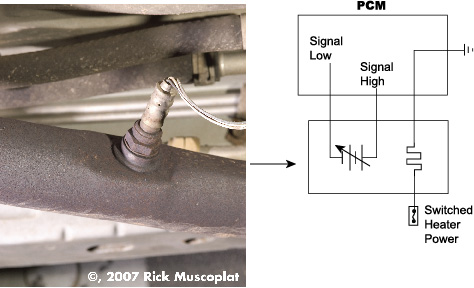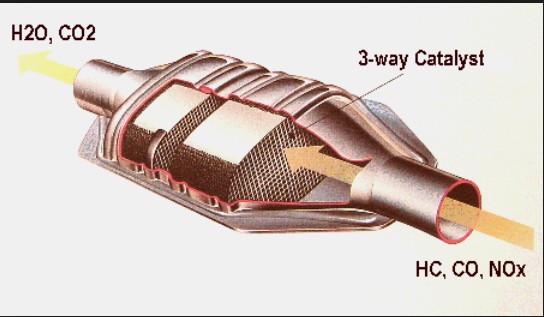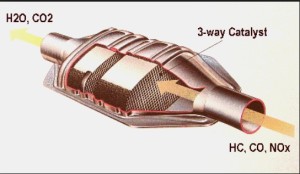P2098
Fix code P2098 trouble code on Dodge Stratus, Sebring
Trouble code P2098 on a Dodge Sebring or Dodge Stratus indicates that the downstream (post catalytic converter) is reporting a reading that’s consistently above or below center for a predetermined amount of time. Most DIYers replace the oxygen sensor and wonder why they still get the same code. In effect they’re treating the messenger and not the message.
An exhaust system has two oxygen sensors. The first sensor tests how well the  computer did in calculating air/fuel mixture. The second sensor tests how well the catalytic converter
computer did in calculating air/fuel mixture. The second sensor tests how well the catalytic converter
did its job in cleaning up emissions. The pre-cat sensor should reports rapid fluctuations between rich and lean, as the computer is constantly trying to correct air/fuel mixtures for all RPMs. But the post cat sensor should have very few fluctuations, showing that the catalytic converter has cleaned up the exhaust.
If the computer detects NO fluctuations in the post catalytic converter sensor,
it’ll purposely force rich/lean conditions to get a reaction from the post cat sensor. However, if there’s a vacuum leak, exhaust leak or a fuel system problem, the post cat sensor can stay above or below the centerline. If the reading stays above or below past a predetermined amount of time, the computer will set P2098.
Keep in mind that an oxygen sensor fails in fairly predictable ways. If it’s contaminated with coolant, silicone, or oil, the substance will clog the pores of the sensor and it will report NO oxygen. In other words, it’ll report a dead signal. If the pores are partially clogged, the sensor will not switch between rich and lean very quickly. This is known as a “lazy sensor.” But one thing a bad sensor will never do is report a consistent above or below center as this code indicates. So if you replaced the sensor to fix a P2098, you were chasing the wrong squirrel.
A shop would connect a scan tool and check for increased fuel trim. That’s extra fuel that the computer is commanding to make up for a vacuum leak. If they see that, they’ll hunt for a vacuum leak or a leak in the air duct between the MAF sensor  and the throttle body. If they don’t find a vacuum leak, they’ll check for an exhaust leak. An exhaust leak would suck outside air into the exhaust during deceleration, causing the post cat sensor to report above or below center. If that checks out, they’ll look for a fuel or mechanical problem.
and the throttle body. If they don’t find a vacuum leak, they’ll check for an exhaust leak. An exhaust leak would suck outside air into the exhaust during deceleration, causing the post cat sensor to report above or below center. If that checks out, they’ll look for a fuel or mechanical problem.
Looking for more information on catalytic converters? Click here to go to Eastern Catalytic, a large manufacturer of converters.
© 2012 Rick Muscoplat
Posted on by Rick Muscoplat

